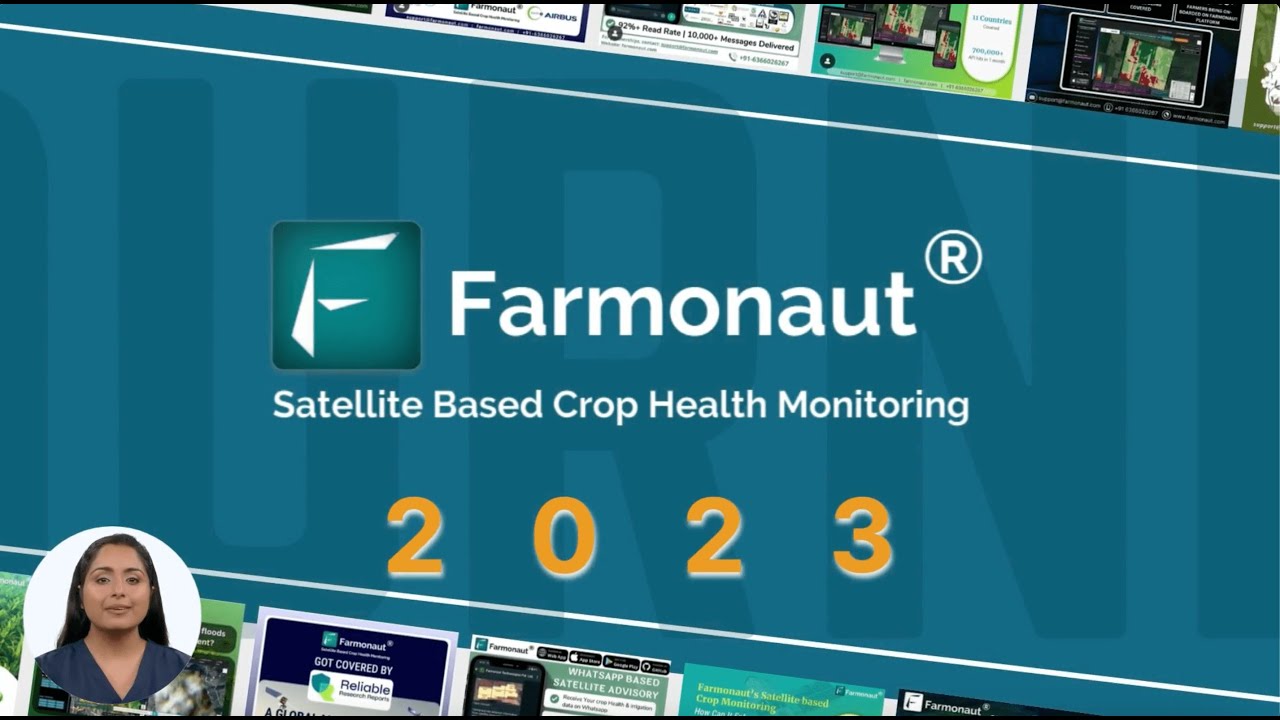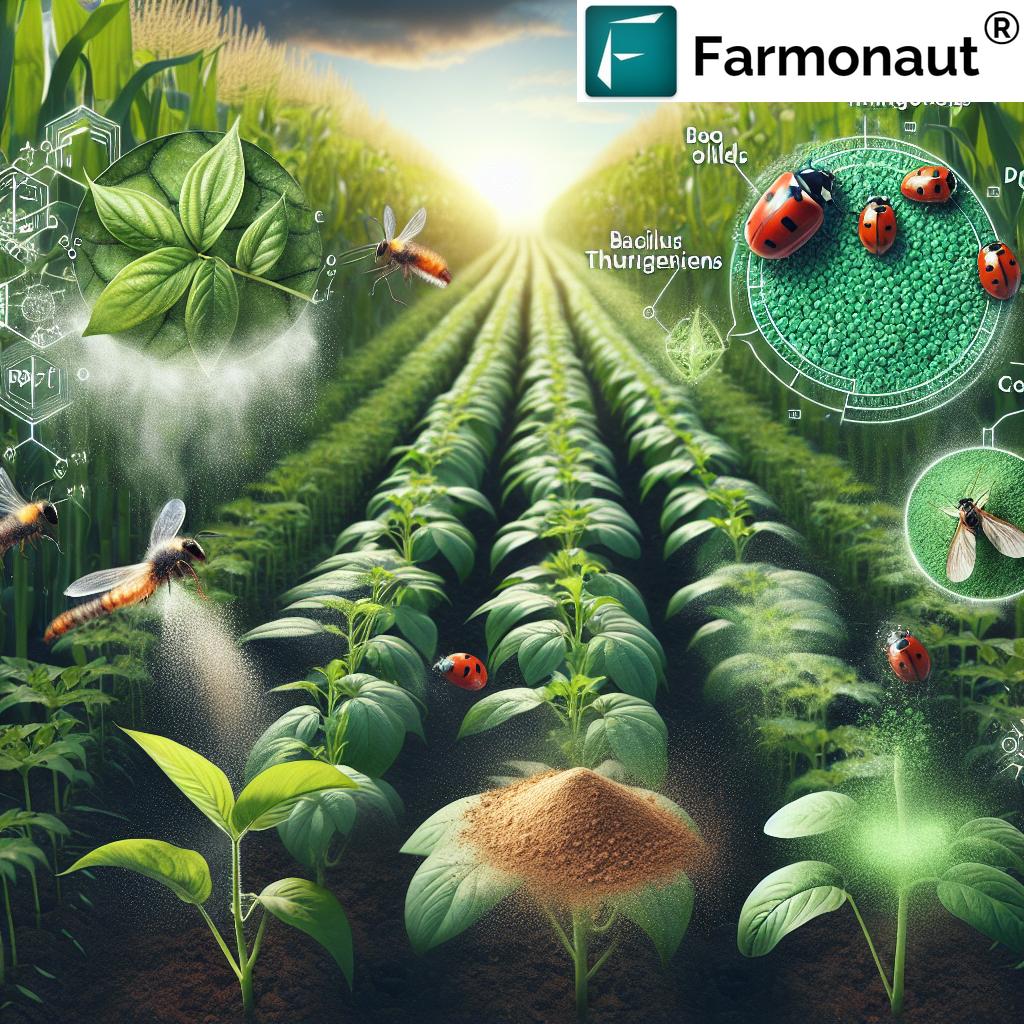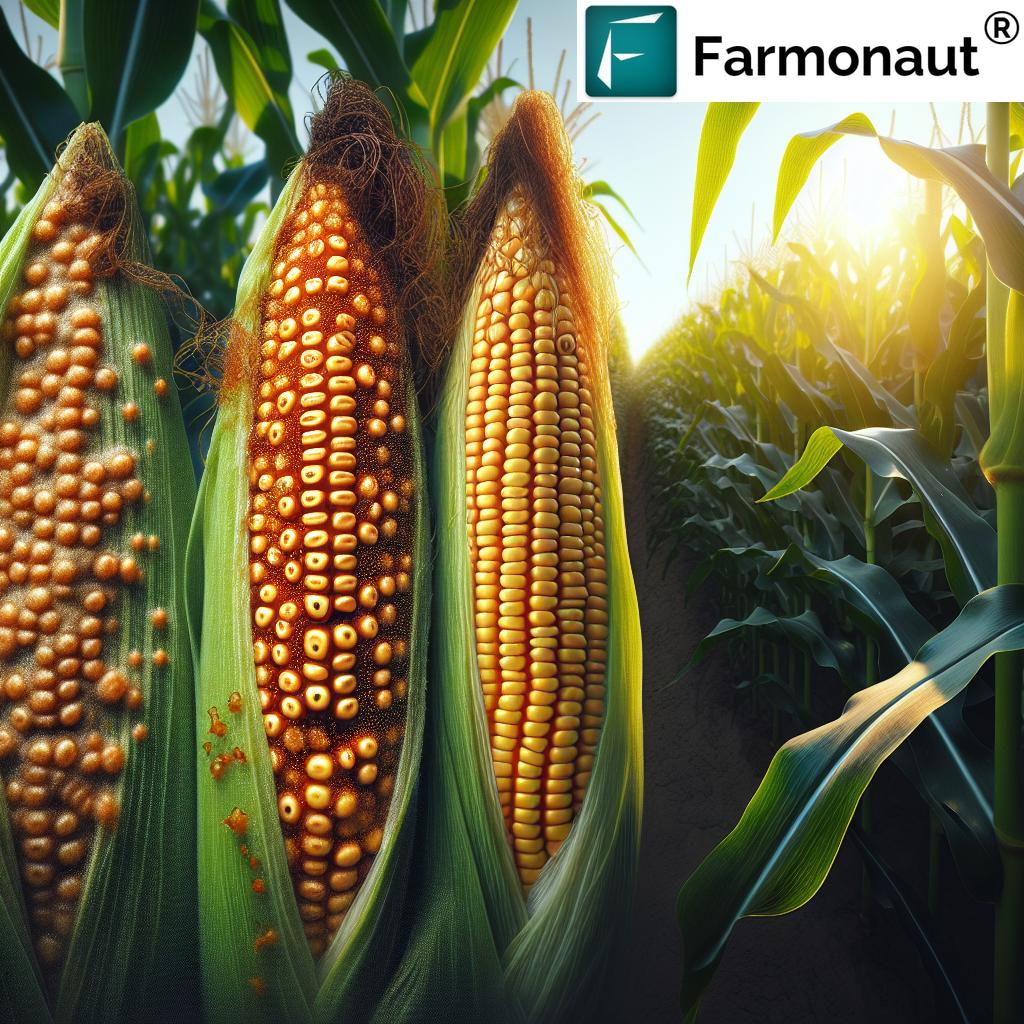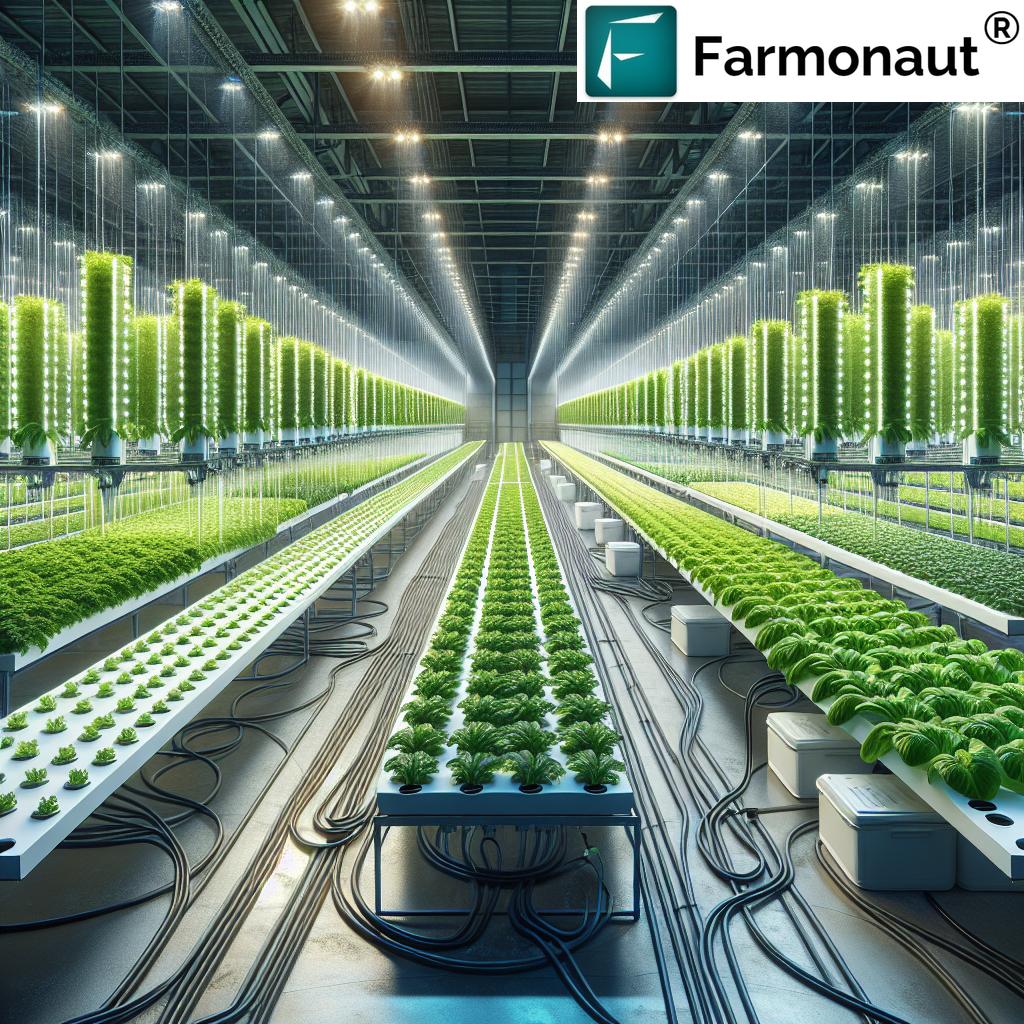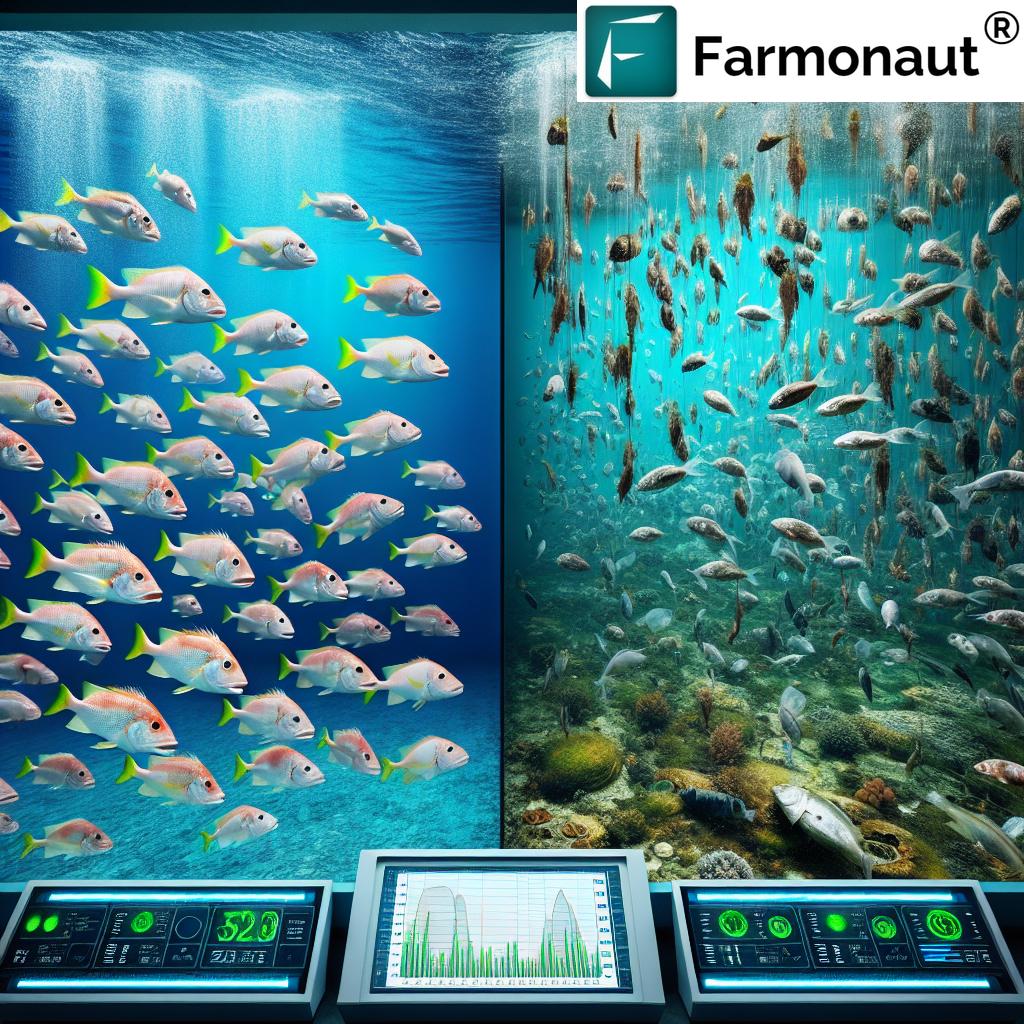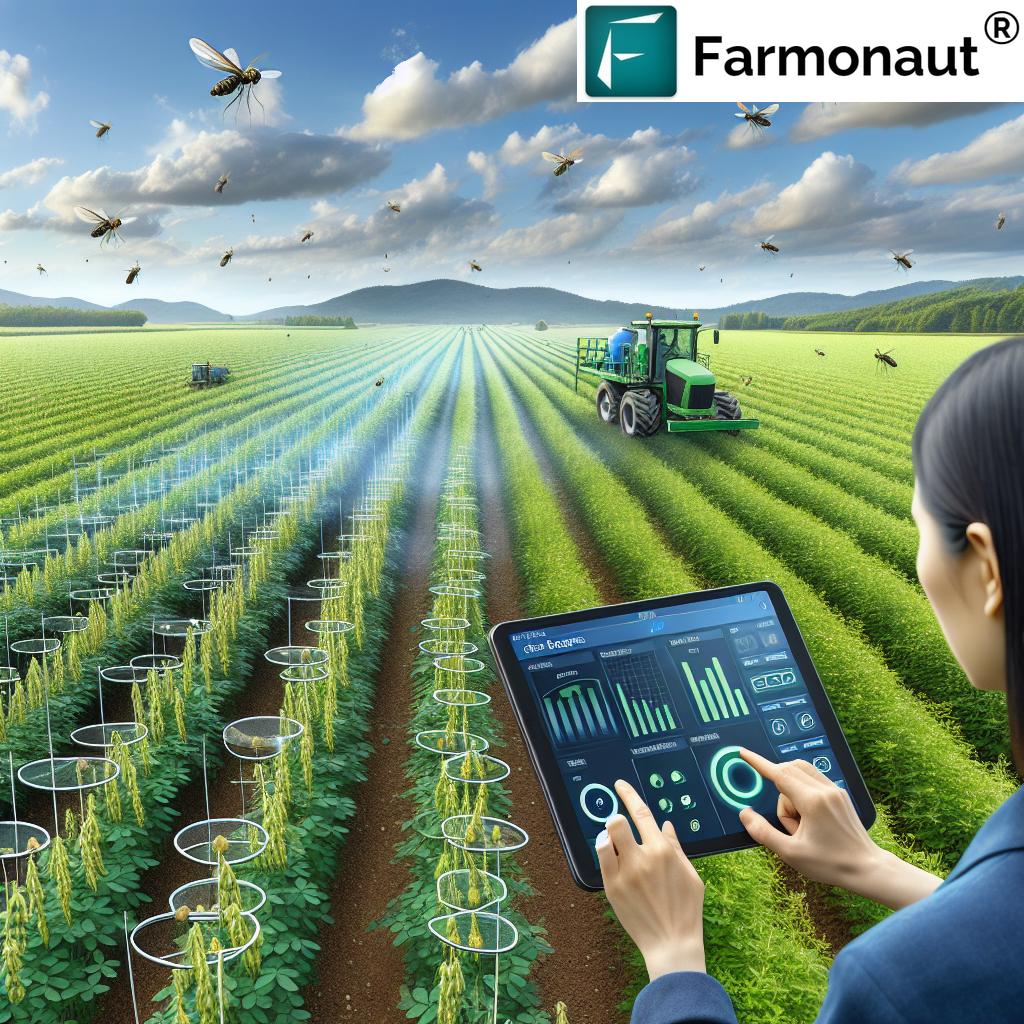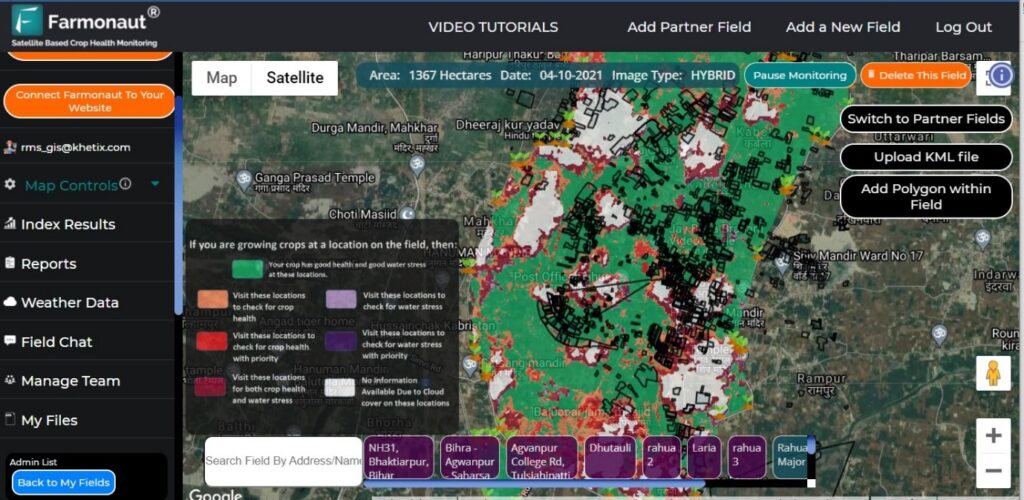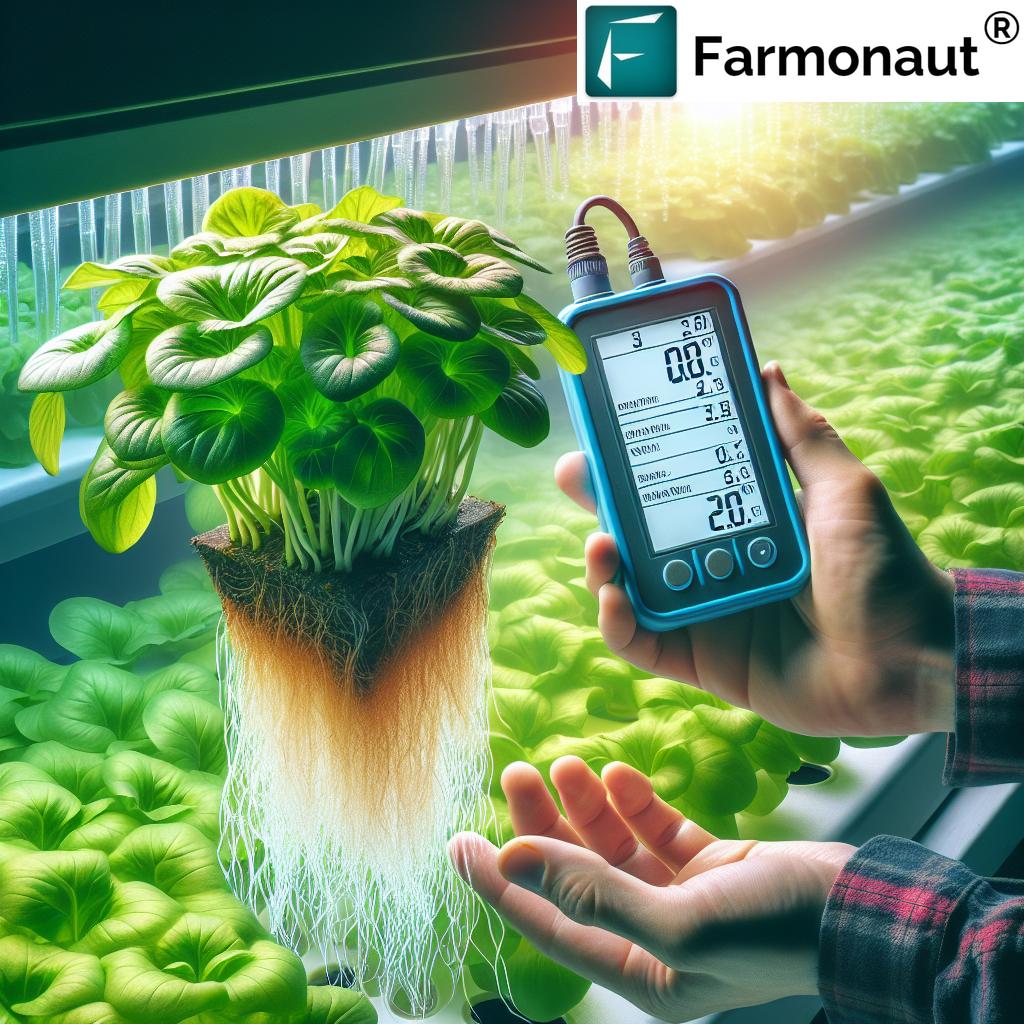Agriculture and Sustainability: 7 Shocking Eco Secrets
“Sustainable agriculture can reduce water usage by up to 50% compared to conventional farming methods.”
- Introduction: Why Sustainability in Agriculture Matters
- Eco Secret 1: Crop Rotation and Polyculture
- Eco Secret 2: Cover Cropping for Soil Health
- Eco Secret 3: Conservation Tillage Techniques
- Eco Secret 4: Integrated Pest Management
- Eco Secret 5: The Power of Agroforestry
- Eco Secret 6: Technology and Precision Agriculture
- Eco Secret 7: Socio-Economic Equity and Community Engagement
- Comparative Table: Traditional vs Sustainable Practices
- Challenges and Solutions for Sustainable Agriculture
- Farmonaut: Driving Sustainable Agriculture Forward
- Frequently Asked Questions
- Conclusion: Shaping Our Future, One Farm at a Time
Introduction: Why Sustainability in Agriculture Matters
As we look toward the future of farming, achieving real sustainability in agriculture means much more than just boosting crop yields or maximizing profits for the current season. Sustainable agriculture is a holistic, integrated approach that seeks to meet current food and textile needs while preserving natural resources, supporting farmers’ livelihoods, and maintaining social equity for generations to come.
Our agricultural systems are at a crucial crossroads. Global population growth, climate change, and ecosystem decline demand smarter, more sustainable farming practices. By focusing on soil health management, water conservation, crop diversity, and innovative technologies, we can achieve remarkable environmental, economic, and social sustainability—setting a healthy path for future generations.
In this comprehensive guide, let’s discover seven shocking eco secrets—transformative sustainable farming practices with the power to reshape not only our farms but also our food systems, communities, and the planet.
Eco Secret 1: Crop Rotation and Polyculture
How Crop Rotation and Polyculture Enhance Sustainable Agriculture
One of the cornerstones of sustainable agriculture is crop rotation and polyculture. Instead of repeatedly planting a single crop in the same area (monoculture), we alternate different crops across seasons and embrace growing a variety of plants together. This diversity mimics natural ecosystems, resulting in more resilient systems that maintain soil fertility, decrease pest infestations, and lower chemical input needs.
- Enhances soil health: Legumes (like clover or alfalfa) fix nitrogen, enriching nutrients for subsequent crops.
- Reduces disease/pest risk: Rotating crops breaks pest and disease cycles, reducing the need for pesticides.
- Improves yield stability: Diverse cropping increases resilience to extreme weather events.
A varied crop rotation strategy involves planting cereals one season, then legumes, followed by deep-rooted vegetables. Each crop type uniquely contributes to soil structure, nutrient cycling, and ecological balance.
Example: In India’s Punjab, wheat, rice, and pulses are rotated seasonally to reduce soil degradation—showcasing environmental sustainability in agriculture.
Eco Secret 2: Cover Cropping for Soil Health
Sustainable Agriculture Through Cover Cropping
Cover cropping involves planting non-commercial crops, such as rye, clover, or alfalfa, during fallow periods. These cover crops serve crucial roles:
- Protects soil from erosion: Dense cover shields against wind and water loss, preserving the soil.
- Suppresses weeds: Blocks sunlight, limiting weed growth without herbicides.
- Replenishes soil nutrients: Adds organic matter and fixes nitrogen, improving fertility.
- Improves water retention: Root systems enhance soil structure, enabling better water infiltration and conservation.
Using cover crops like mustard or vetch in rotation builds soil health management—reducing fertilizer and pesticide reliance. Healthy soils boost crop yields and reduce runoff and pollution, contributing to sustainable food production.
“Healthy soil management increases crop yields by 58% while reducing greenhouse gas emissions by 20%.”
Eco Secret 3: Conservation Tillage Techniques
The Importance of Conservation Tillage for Soil & Water
Conservation tillage techniques—including no-till and reduced-till farming—revolutionize how we care for our land. By minimizing soil disturbance, these approaches preserve soil structure and moisture, supporting benficial organisms and cutting erosion dramatically.
- Preserves soil structure: Protects against surface crusting and compaction, ensuring healthy roots.
- Enhances water infiltration: Allows rainfall to penetrate, reducing runoff and conserving water.
- Supports beneficial organisms: Encourages earthworms, microbes, and pollinators—key players in natural fertility cycles.
- Reduces carbon footprint: Decreases fossil fuel use (fewer tractor passes) and sequesters carbon through increased organic matter.
In sustainable agriculture, conservation tillage is a game-changer, resulting in higher soil health, lower water use, and climate resilience. Farmers worldwide are adopting these methods to build profitable, ecologically sound farms for the long term.
Eco Secret 4: Integrated Pest Management (IPM)
The Role of Integrated Pest Management in Chemical Reduction
Integrated pest management (IPM) is a science-backed approach that combines biological, mechanical, and cultural methods to control pests—minimizing chemical pesticide use and protecting both human health and the environment.
- Biological control: Introducing beneficial organisms—like ladybugs and predatory beetles—to target and reduce pest populations naturally.
- Mechanical & cultural control: Techniques like traps, barriers, or timing plantings to avoid pest outbreaks.
- Monitoring & precision management: Using technology (like Farmonaut crop health monitoring) to detect stress early and intervene precisely, only as needed.
- Reduced reliance on chemical pesticides: Lowers the risk of environmental contamination and resistance, while preserving biodiversity.
IPM is central to sustainable farming practices; it promotes healthy ecosystems while also improving economic profitability for farmers by reducing expensive chemical inputs.
Want tamper-proof record-keeping for your food and textile supply chain? See how Farmonaut’s blockchain-based product traceability enhances consumer trust.
Eco Secret 5: The Power of Agroforestry
Harnessing Agroforestry Benefits for Soil, Biodiversity, and Carbon
Agroforestry is the practice of integrating trees and shrubs into agricultural landscapes—a time-tested method for supporting sustainable agriculture on almost any scale.
- Improves soil health: Deep roots cycle water and nutrients, preventing erosion and drying.
- Enhances biodiversity: Trees and shrubs provide habitat for pollinators, birds, and beneficial insects.
- Carbon sequestration: Trees absorb and store atmospheric carbon, directly combating climate change.
- Provides diversified income: In addition to crops, trees offer fruits, nuts, timber, and even shade (reducing irrigation needs).
- Physical protection: Windbreaks reduce crop stress and soil loss, especially valuable in arid zones.
The agroforestry benefits are multidimensional—economic, environmental, and social. This technique makes our agricultural systems more resilient, profitable, and ecologically responsible.
Looking to track your field’s carbon savings and prove your farm’s sustainability? Explore Farmonaut’s carbon footprinting solutions.
Eco Secret 6: Technology and Precision Agriculture
Unlocking Sustainability and Profitability with Smart Tools
Technology is transforming how we approach sustainability. With the rise of satellite imaging, AI-based advisory, blockchain, and machine learning, farmers now wield powerful data to drive informed, precise decisions—saving resources and optimizing outcomes.
- Satellite-based crop health monitoring: Track real-time growth, spot early signs of stress, and optimize irrigation, nutrients, and pest management—all with affordable, scalable tech via the Farmonaut App.
- AI-powered farm advisory: Like the Jeevn AI system, delivers personalized, season- and crop-specific advice for boosting yields and lowering costs.
- Resource management tools: Fleet tracking, field mapping, and efficient logistics reduce fuel, time, and risk (Fleet & Resource Management).
- Blockchain-based traceability: Assures provenance and transparency for food and textiles, meeting growing market demand for sustainability.
Tech-powered precision farming and real-time decision-making mean less waste and greater profitable sustainability for farmers.
API Integration: For developers and agri-enterprises, seamless access to satellite & weather data is now possible using the Farmonaut API and detailed developer documentation.
If you manage large acreages, check out robust solutions for large-scale farm management—enabling monitoring across regions, enabling rapid response to disease or climate events.
Learn, adapt, and embrace sustainable farming practices with the latest, affordable technology.
Eco Secret 7: Socio-Economic Equity and Community Engagement
Fostering Social Sustainability in Agriculture
True sustainable agriculture focuses not only on environmental and economic outcomes, but also on social equity and the well-being of communities.
- Community engagement: Involve local stakeholders in decision-making to protect cultural knowledge and encourage local leadership.
- Fair labor practices: Commit to fair wages, safe working conditions, and the protection of workers’ rights.
- Food security and nutrition: Prioritize diverse, nutritious crops reducing hunger and strengthening resilience.
- Improving market access for farmers: Sustainable certification, better product traceability, and direct-from-farm digital sales can open premium markets and support higher farm incomes.
Ensuring social sustainability means our food systems are not just productive, but also just and inclusive. That is real impact—feeding the world while upholding the dignity and prosperity of farming families.
For satellite-based verification supporting crop loans and insurance, visit Farmonaut Crop Loan and Insurance.
Comparative Table: Traditional vs Sustainable Agriculture Practices
| Practice Type | Description | Estimated Impact on Soil Health | Estimated Water Usage (liters/ha) | Estimated Carbon Footprint Reduction (%) | Social/Economic Benefit |
|---|---|---|---|---|---|
| Cropping: Monoculture | Single crop grown repeatedly across years | Depletes nutrients, higher disease risk | ~22,000 | 0% | Unstable income, high risk |
| Crop Rotation and Polyculture | Diverse crops in rotation, mimicking ecosystem | Improves fertility, reduces erosion | 11,000–15,000 (Up to 30% reduction) |
Up to 25% | Stable yield, risk reduction |
| Leaving Bare Land (Fallow) | No crops/growth during off-season | Prone to erosion, organic matter loss | Varies | 0% | No added value |
| Cover Cropping | Legumes, rye, or clover sown off-season | Boosts organic matter, nutrient recycling | 10,000–13,000 | Up to 20% | Input savings, better drought resilience |
| Tillage (Conventional) | Deep plowing, frequent disturbance | Erosion, compaction, loss of soil life | High | 0% | High labor and fuel cost |
| Conservation Tillage | No-till or minimal tillage, residue retention | Improves soil structure, retains water | 8,000–12,000 | Up to 30% | Lower costs, improved land value |
| Chemical-Only Pest Control | Routine use of synthetic pesticides | Destroys beneficial organisms | Varies | 0% | Costly, health risks |
| Integrated Pest Management (IPM) | Biological, mechanical, precision control | Promotes biodiversity and soil life | Lower (from healthier plant root) | Up to 15% | Input & cost savings, food safety |
| No Trees/Shrubs | Open fields only | Vulnerable to erosion | High | 0% | None |
| Agroforestry | Integrating trees/shrubs with crops | Enriches soil, strengthens ecosystem | Up to 35% less | Up to 40% | Diverse income, local jobs |
Challenges and Future Directions for Sustainable Agriculture
Key Barriers to Adopting Sustainable Agriculture
- Limited access to resources: Many farmers, especially in low-income regions, lack access to quality seed, tools, or knowledge about sustainable farming practices.
- Knowledge gaps: Resistance to change or lack of training hampers adoption of new techniques and strategies.
- Market barriers: Smallholder farmers often lack market access for premium, sustainably grown products—even when producing at higher standards.
- Policy and financial support: Inadequate government incentives, insurance, or credit make risk-taking harder.
Strategies for Overcoming Challenges
- Education & Training: Extension services, local farmer groups, and digital platforms (like Farmonaut) provide essential guidance for implementing sustainable methods.
- Innovative Policy: Governments can accelerate sustainable adoption with targeted grants, research funding, and rewarding environmental stewardship (for example, carbon credits).
- Research and Innovation: Continued development of drought/heat-resistant crops, smarter pest management, and climate-ready farming systems ensures future resilience.
- Digital Marketplaces and Traceability: Platforms that offer product traceability and connect directly with ethical consumers expand market access for sustainable products.
Farmonaut: Driving Sustainable Agriculture Forward
Empowering Farmers with Affordable Precision & Eco-Insight
At Farmonaut, we’re revolutionizing sustainable agriculture by integrating advanced technologies into practical, everyday farming systems. Our affordable, satellite-based platform places precision agriculture tools in the hands of farmers, co-operatives, and enterprises worldwide.
- Real-time crop health monitoring: Visualize fields, analyze NDVI and soil moisture, and get science-backed guidance in minutes—not weeks.
- Personalized farm advice: Let our Jeevn AI Advisory System deliver crop-specific, actionable tips for healthier yields.
- Blockchain traceability: Digitally track farm produce from seed to shelf with tamper-proof provenance.
- Resource & fleet management: Streamline logistics, reduce costs, and minimize waste for your agri-enterprise with intelligent routing and machinery optimization.
- Carbon footprinting: Track and reduce your emissions—report your sustainability story with ease.
- Crop loan & insurance support: Satellite-based verification tools make financing more accessible and efficient for modern farmers.
- API for developers: Seamlessly integrate real-time satellite and weather data using Farmonaut’s API or get details via our developer docs.
Our commitment? To provide sound, economically viable, and socially responsible solutions for everyone aspiring to champion the cause of sustainable, profitable agriculture.
Frequently Asked Questions (FAQ)
What is sustainable agriculture?
Sustainable agriculture is a holistic approach to farming that integrates environmental health, economic profitability, and social equity. It focuses on practices that are ecologically sound, economically viable, and socially responsible—meeting current food needs while preserving resources for future generations.
Why is soil health management critical in sustainable farming?
Soil health management creates a living, resilient foundation for crops. Healthy soils store nutrients, hold water, support beneficial microbes, and sequester carbon—reducing erosion, improving yields, and making agricultural systems more sustainable overall.
How does Farmonaut help improve sustainability on farms?
Farmonaut provides affordable, satellite-based tools for real-time crop monitoring, AI-driven farm advice, blockchain traceability, resource/fleet management, and carbon footprint tracking—enabling farmers and businesses to make data-driven, sustainable decisions.
What is integrated pest management, and why is it eco-friendly?
Integrated pest management (IPM) is a multi-method strategy that combines biological, mechanical, and cultural controls to manage pests. By reducing chemical pesticide use, IPM protects beneficial organisms, preserves environmental health, and prevents pollution.
Are sustainable farming practices more profitable?
Yes—over time, sustainable practices reduce input costs (such as water, fertilizer, and pesticides), enhance soil fertility, TAP into premium markets, and diversify income streams, improving economic sustainability for farmers.
How can producers access new markets for sustainably grown crops?
Certifications, traceability systems, direct digital sales, and partnerships with ethical brands help farmers gain market access and receive fair prices for sustainable produce.
Where can I learn more or start using sustainable agri-tech tools?
Start by downloading the Farmonaut app, exploring our carbon footprinting and traceability solutions, or reviewing crop health with our real-time satellite-based system.
Conclusion: Shaping Our Future, One Farm at a Time
Sustainable agriculture is more than a buzzword—it’s a global imperative that touches every layer of our food system, from invisible soil microbes to planetary carbon cycles. By adopting eco-secrets such as crop rotation, cover cropping, conservation tillage, integrated pest management, agroforestry, cutting-edge technology, and commitment to social equity, we can ensure our planet’s resources support thriving communities—now and for generations to come.
With platforms like Farmonaut making data-driven, precision sustainable farming practices accessible to all, the path to environmental sustainability in agriculture is open. If we act today—sustainably, responsibly, and collaboratively—our agricultural systems will not just survive but flourish.
Join the movement. Transform your farm, your food, and our future—one eco secret at a time.





